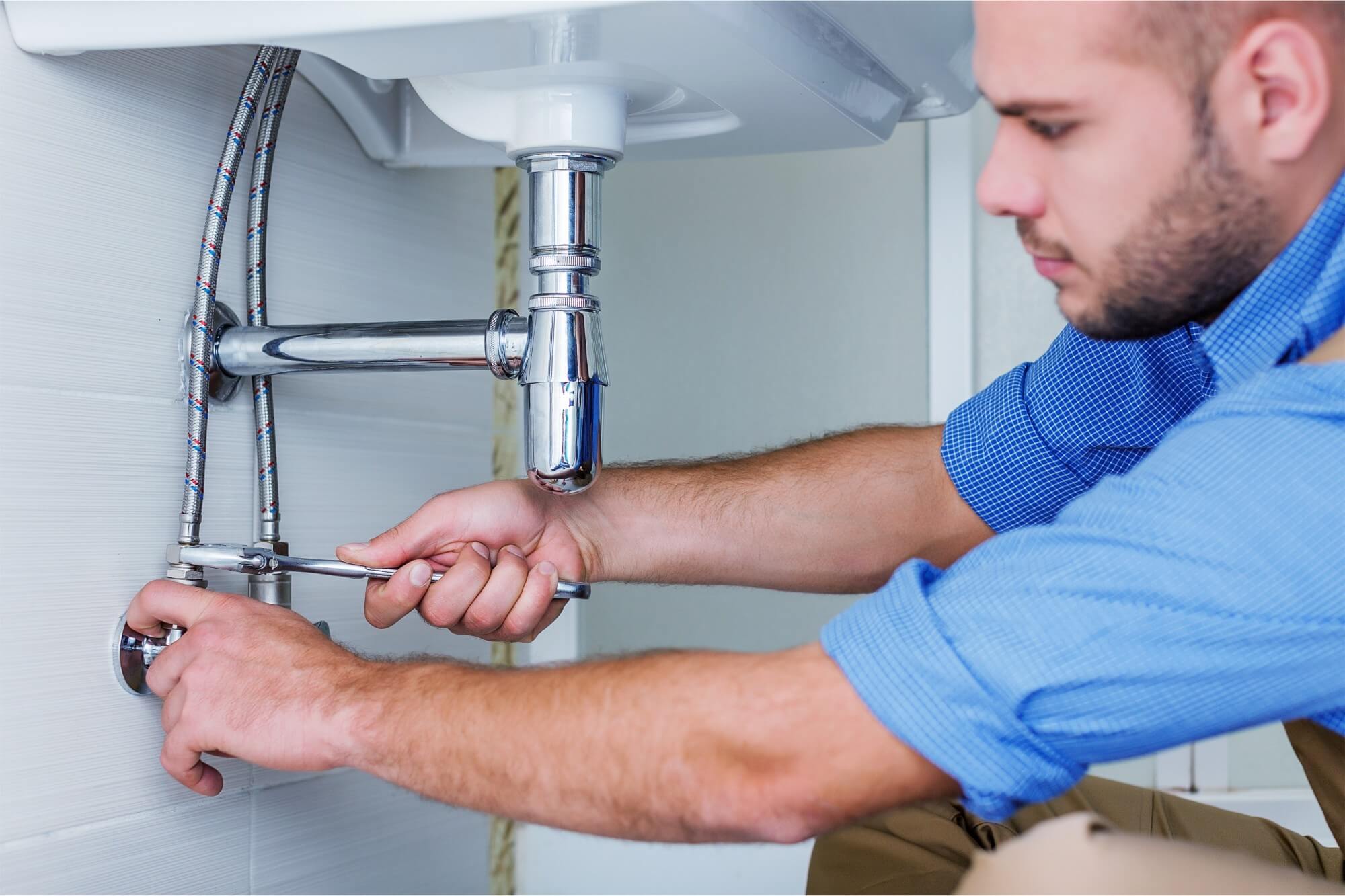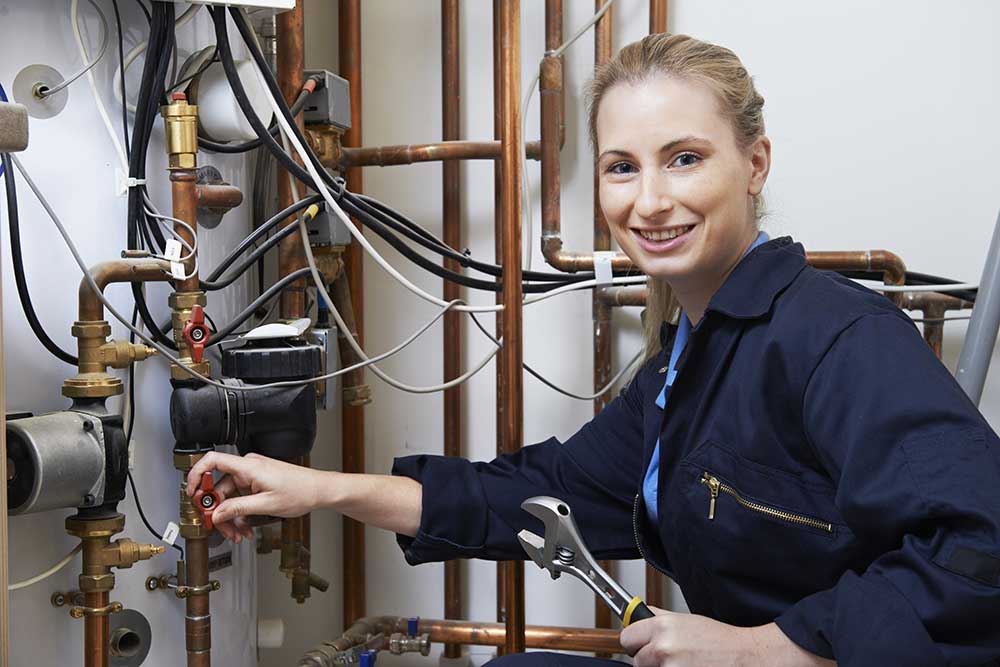Emergency Water Leaks: When to Bring in a Licensed Plumber Immediately
Emergency Water Leaks: When to Bring in a Licensed Plumber Immediately
Blog Article
Typical Pipes Issues Every Property Owner Must Know
Property owners typically experience a variety of plumbing concerns that can interfere with every day life. Typical issues consist of leaky faucets, blocked drains, and running bathrooms. These problems usually originate from damaged components or debris accumulation. In addition, low tide stress and ruptured pipelines can signify much deeper problems. Understanding these difficulties is necessary for reliable maintenance. There are various other less evident issues that can develop, which call for closer exam.
Leaky Taps
Leaking taps can be a discouraging annoyance for house owners. These persistent leaks not only develop a frustrating sound yet additionally lead to squandered water and enhanced utility costs. A leaky faucet usually arises from damaged washing machines, O-rings, or seals, which wear away over time because of routine usage and direct exposure to water. In many cases, the faucet's internal parts may be worn away or damaged, requiring a more comprehensive repair service or replacement. Identifying the resource of the leak is essential; property owners may need to take apart the faucet to examine its components very closely. Routine upkeep can assist avoid leaks, consisting of cleansing aerators and looking for indications of wear. Addressing a leaky tap without delay can save water and lower expenses, making it a convenient yet necessary job for house owners to tackle in keeping their pipes systems effectively. Correct interest to this common problem can cause a more comfortable living environment.
Obstructed Drains
Numerous home owners experience the aggravation of clogged drains eventually. This typical pipes issue can arise from different reasons, consisting of the build-up of hair, soap deposit, food bits, and grease. These materials can develop clogs that impede the flow of water, causing reduce drain or total stoppage.In kitchens, oil and food scraps are typically the culprits, while washrooms often experience hair and soap accumulation. Regular upkeep, such as making use of drain filters and preventing pouring fats down the sink, can help avoid clogs.When an obstruction does take place, property owners might try to use a plunger or a business drain cleaner as preliminary remedies. Consistent concerns might require specialist support to prevent damages to pipes. Recognizing the causes and avoidance methods for clogged drains pipes can save home owners money and time, ensuring a smoother plumbing experience

Running Bathrooms
Running commodes are an usual concern that can come from different reasons, including malfunctioning flappers and chain problems. The continuous running not only drainages yet also leads to enhanced energy bills. Dealing with these issues without delay can bring back and avoid more complications efficiency to the pipes system.
Root Causes Of Running Toilets
A relentless circulation of water from a bathroom can be both annoying and inefficient, usually signifying underlying problems within the pipes system. One usual reason is a used flapper shutoff, which might not produce a correct seal, allowing water to constantly leakage into the bowl. Additionally, a malfunctioning fill shutoff can bring about too much water flow, adding to the trouble. Misaligned float mechanisms might likewise trigger the commode to run as they stop working to manage the water level properly. Another prospective issue is mineral buildup, which can block components and prevent their functionality. Identifying these reasons immediately can assist house owners deal with the problem prior to it intensifies, making sure reliable operation of their plumbing system.
Repercussions of Continual Operating
Frequently overlooked, the repercussions of a constantly running toilet can significantly impact both water use and household expenditures. A running commode can waste an average of 200 gallons of water daily, leading to raised water expenses and unneeded source intake. This too much water usage not just strains the household budget plan but additionally adds to environmental worries, especially in areas dealing with water scarcities. Additionally, the consistent sound of running water can be a resource of annoyance, interfering with the tranquility of the home - Plumbing. In addition, extended problems might result in more significant plumbing problems if left unaddressed, causing further monetary burdens. House owners must acknowledge the significance of timely repair work to mitigate these negative effects and keep an effective plumbing system
Fixing Running Bathroom Issues
Commodes that continuously run can be an irritating concern for house owners, however determining the cause is the primary step towards an effective solution. Common causes include a malfunctioning flapper, which may not develop a proper seal, enabling water to run away right into the dish. Home owners should inspect the flapper for wear and change it pop over to this web-site if essential. In addition, the fill shutoff could be malfunctioning, creating excess water to move continuously. Changing this element or changing may fix the issue. Another possible wrongdoer is a misaligned float, which can be adapted additional info to the right elevation. Normal maintenance and prompt repair work can protect against running toilets, ensuring both water preservation and cost savings on utility costs.
Low Tide Pressure
Low water stress can be an irritating experience for home owners, usually showing up as a weak stream from showerheads and faucets. This problem can stem from different reasons, including debris buildup in pipelines, corroded pipes, or problems with the metropolitan water system. Property owners may originally discover reduced water pressure in details locations of the home, yet it can intensify to an extra extensive trouble if not resolved promptly.In some situations, malfunctioning stress regulators can also be in charge of poor water circulation. Routine upkeep, such as purging the water heater and looking for blockages, can assist minimize these issues. If low tide pressure continues, it might be necessary to seek advice from an expert plumbing professional to diagnose and fix the underlying reason. Identifying the source of low tide stress is important for bring back proper water flow and making sure a useful pipes system.
Burst Water lines
Ruptured pipelines can be a significant pipes problem, frequently resulting from the exact same elements that add to low water pressure, such as temperature fluctuations and aging infrastructure. When water freezes within pipelines, it broadens, boosting pressure up until the pipeline can no longer contain it, leading to a tear. In addition, deterioration from long term direct exposure to water can compromise pipes, making them at risk to breaking under typical pressure.Homeowners may observe indications of a burst pipe via abrupt water leaks, wet spots on wall surfaces or ceilings, and an unforeseen rise in their water costs. Immediate action is crucial; stopping working to deal with a ruptured pipe can cause considerable water damage, mold development, and pricey repair services. Normal examinations and maintenance of plumbing systems can aid avoid this issue. Protecting pipelines in chillier locations and replacing old piping can substantially reduce the threat of ruptured pipelines, safeguarding the home's plumbing honesty.
Hot Water Heater Issues
How can house owners identify hot water heater issues prior to they intensify? Regular examination and maintenance can assist find potential troubles early. Homeowners ought to try to find indicators such as irregular water temperature, unusual noises, or a decline in hot water supply. Leaks or puddles around the device might indicate address a malfunction that requires instant focus. The look of corrosion or debris buildup can additionally signal the need for maintenance.Additionally, home owners should keep track of the age of their hot water heater; most units have a lifespan of 8 to 12 years. It may be time to show on substitute if the heating unit is approaching this age and showing signs of wear. Regular flushing of the container can protect against debris buildup, lengthening the device's life. By continuing to be watchful and attending to problems quickly, property owners can avoid costly repair work and guarantee their hot water heater runs effectively for several years ahead.
Drain Line Troubles
Several home owners may experience sewer line problems at some point, impacting their pipes system's general functionality. Typical issues consist of obstructions, tree root breaches, and pipeline damages. Obstructions frequently arise from the build-up of grease, hair, and foreign objects that obstruct the flow of wastewater. Tree origins can penetrate drain lines, causing leakages and cracks. In addition, aging pipelines may rust or damage, bring about more complications (Plumbing). Signs of drain line problem include sluggish drains, undesirable odors, and sewer backups, which can present health threats. Property owners need to deal with these problems immediately to avoid substantial damages and costly fixings. Normal maintenance, such as arranged assessments and cleansing, can aid prevent considerable issues. In serious instances, expert treatment may be essential to repair or change broken areas of the sewage system line. Knowing these possible troubles can aid house owners take aggressive measures to preserve their plumbing systems effectively
Regularly Asked Questions
Just How Can I Avoid Pipes Issues in My Home?
To stop pipes troubles, normal upkeep is important. Homeowners must inspect pipes for leakages, clean drains, and screen water stress. Additionally, educating themselves concerning correct usage can significantly decrease the risk of future plumbing issues.
When Should I Call a Plumbing Instead of Repairing It Myself?
Establishing when to call a plumbing typically depends on the severity of the problem. Significant leaks, relentless blockages, or unfamiliar troubles require professional assistance, making certain security and protecting against additional damage rather than risking personal efforts at fixing.
What Are the Indications of Hidden Pipes Leaks?
Indicators of surprise pipes leakages include unusual water bills, moist places on wall surfaces or ceilings, mold growth, and a stuffy odor. These indicators commonly recommend underlying concerns that need professional assessment and fixing for resolution.
How Often Should I Have My Pipes Checked?
Routine pipes examinations are recommended every one to 2 years. This regularity helps recognize potential concerns early, ensuring the system continues to be efficient and decreasing the threat of expensive repair work or unexpected emergencies in the future.
Are There Do It Yourself Solutions for Minor Plumbing Issues?

Report this page